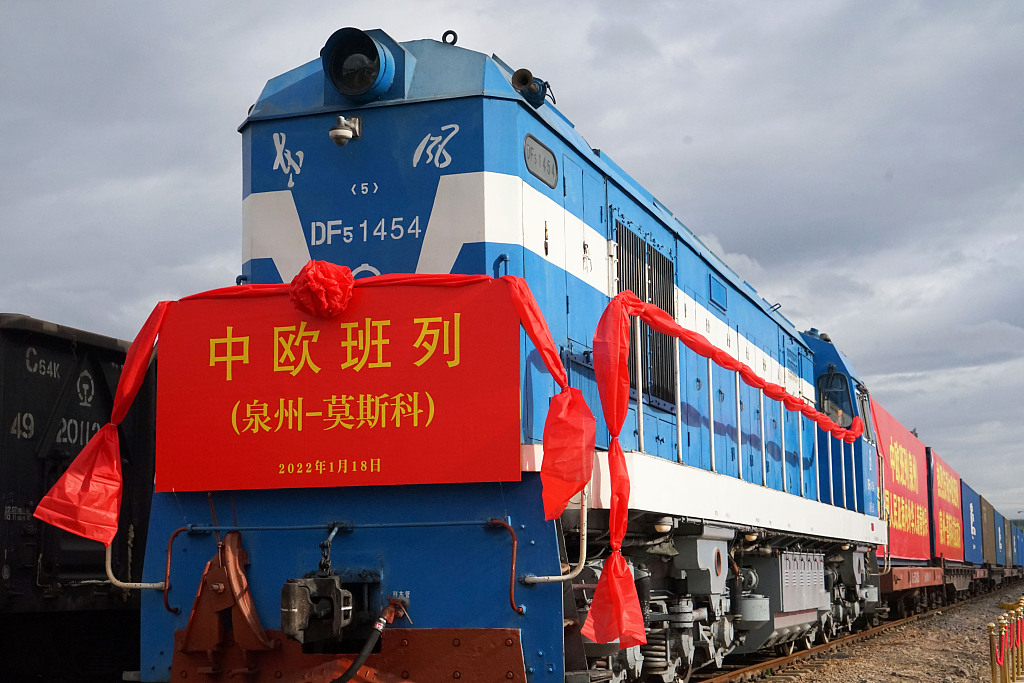When Juan Carlos in Malaga City of Spain ordered a made-in-China ceiling light using a cross-border e-commerce platform, he never imagined he would receive the product the very next day.
"I have to admit, that was faster than I expected," said Carlos in surprise.
The ceiling light came from a warehouse belonging to Qxbox Technology Warehousing Ltd. in Madrid, which explains the rapid delivery. However, like the 100,000 other products at the warehouse, it had already traveled over 8,000 kilometers from China. The speedy shopping experience of Carlos and millions of other Europeans like him would be impossible without highly efficient logistics.
Departing from their point of origin in south China's Guangdong Province, these items were first transported overland to a distribution hub in Xi'an, the capital city of northwest China's Shaanxi Province, and then headed to Spain via China-Europe freight trains, a train service network linking 108 Chinese cities with 208 European cities in 25 countries so far.
Starting in 2011, the network, an important part of the Belt and Road Initiative (BRI) aimed at promoting global connectivity and trade, has offered a secure channel between Asia and Europe, transporting a variety of goods ranging from IT products and automobiles to wines and coffee beans.
"Before 2017, it took more than 40 days to transport goods by ship. But the freight train service cuts the time in half, and at a lower cost," said Mou Jinwen, chairman of Qxbox.

A freight train as part of the China-Europe freight train service leaves Quanzhou City of east China's Fujian Province for Moscow, Russia on January 18, 2022. /CFP
A freight train as part of the China-Europe freight train service leaves Quanzhou City of east China's Fujian Province for Moscow, Russia on January 18, 2022. /CFP
The train service is not only efficient, but also low-carbon.
China-Europe freight train service has reduced more greenhouse gas emissions than other modes of transportation, according to Alexei Grom, the chief executive officer of the United Transport and Logistics Company - Eurasian Rail Alliance (UTLC ERA).
Data from the Eurasian Railway Alliance Index, an index measuring the carbon emissions of trains, shows that compared with other means of transportation, including by sea, road and air, the freight train's direct carbon dioxide emissions are significantly lower.
In the first ten months of 2021, China-Europe freight trains passing through Russia, Belarus and Kazakhstan transported more than 573,188 TEUs (Twenty-foot Equivalent Unit) of goods, resulting in 38,000 tonnes of direct carbon dioxide emissions. By contrast, under the same conditions, the direct carbon dioxide emissions produced by sea, road, and air transport modes amounted to about 183,000 tonnes, 3.405 million tonnes, and 20.2 million tonnes respectively, much higher than the train transport, according to the index.
In addition, China has signed a memorandum of understanding (MoU) with the United Nations Environment Program on building a green Belt and Road, training 3,000 people from more than 120 countries so far under the Green Silk Road Envoys Program, a plan designed to enhance cooperation on environmental protection with BRI participating countries.
(Cover image via CFP, with input from Xinhua)


